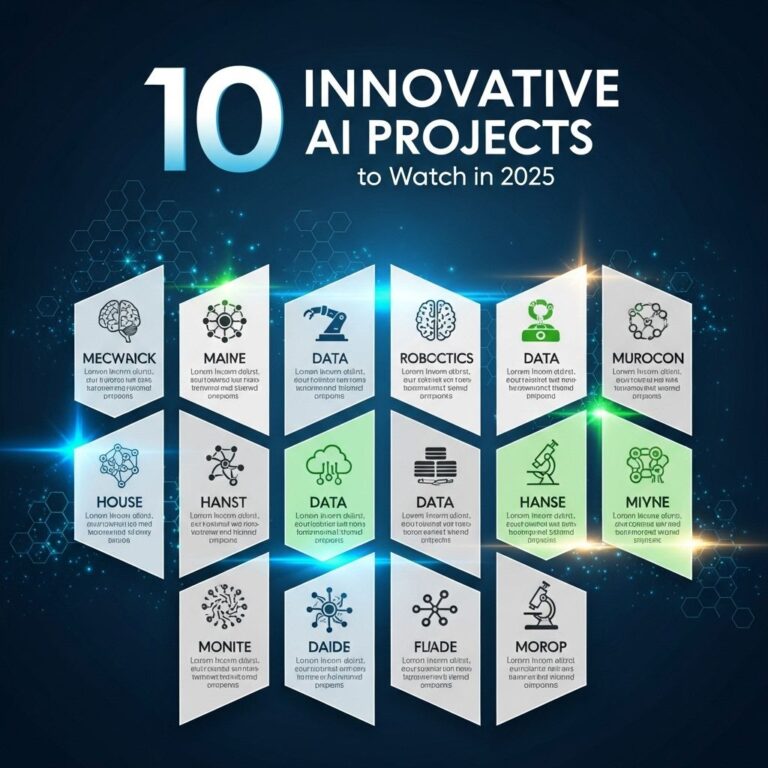Table of Contents
Revolutionize Your AI Infrastructure Management Today
In today’s fast-paced technological landscape, artificial intelligence (AI) is emerging as a powerful catalyst for business transformation across various industries. As organizations increasingly rely on AI to drive innovation and efficiency, the need for effective AI infrastructure management becomes paramount. This article will explore the critical components of AI infrastructure management and provide actionable strategies to improve it.
The Importance of AI Infrastructure
AI infrastructure refers to the combination of hardware and software resources required to develop, train, and deploy AI models. A robust AI infrastructure is crucial for the following reasons:
- Scalability: As organizations grow, their AI needs evolve. A flexible infrastructure can scale to accommodate increased data and computing requirements.
- Performance: AI models require substantial computational power for efficient training and inference. High-performance infrastructure ensures faster processing times and lower latency.
- Cost-effectiveness: Optimizing AI infrastructure can lead to significant cost savings, especially when leveraging the cloud or other shared resources.
- Collaboration: An effective infrastructure fosters collaboration among data scientists, engineers, and stakeholders, enabling smoother project execution.
Key Components of AI Infrastructure
The foundation of a successful AI infrastructure lies in several key components, each playing a vital role in the overall ecosystem:
| Component | Description |
|---|---|
| Compute Resources | High-performance GPUs and CPUs required for processing large datasets and training complex models. |
| Storage Solutions | Scalable storage options such as object storage and data lakes for storing vast amounts of structured and unstructured data. |
| Networking | High-speed networking capabilities to facilitate data transfer, model deployment, and collaboration. |
| AI Frameworks | Software libraries and tools (like TensorFlow, PyTorch, and Keras) that simplify the model development process. |
| Monitoring and Management Tools | Systems that provide insights into infrastructure performance, resource utilization, and model effectiveness. |
Best Practices for AI Infrastructure Management
To maximize the effectiveness of your AI infrastructure, consider implementing the following best practices:
1. Choose the Right Cloud Provider
Cloud computing has revolutionized AI infrastructure management by offering on-demand resources that can be scaled according to needs. When selecting a cloud provider, evaluate:
- Performance capabilities (GPU availability and instance types).
- Data storage options and security measures.
- Pricing models and cost predictability.
2. Implement Automated Workflows
Automation is key to improving efficiency and reducing manual errors in AI infrastructure management. Utilize tools for continuous integration/continuous deployment (CI/CD) to automate:
- Model training and deployment.
- Data preprocessing and cleaning processes.
- Monitoring and alerting for model performance.
3. Optimize Resource Allocation
Efficiently managing resources can lead to significant cost savings and better performance. Consider:
- Dynamic resource allocation based on workloads.
- Using spot instances or reserved instances for cost efficiency.
- Implementing Kubernetes for container orchestration.
4. Monitor Performance Continuously
Regularly monitor your AI infrastructure to ensure optimal performance and identify potential issues before they escalate. Key metrics to track include:
- Resource utilization (CPU, GPU, memory).
- Data throughput and latency.
- Model accuracy and performance over time.
5. Foster Collaboration Among Teams
Encourage collaboration across teams involved in AI projects, such as data scientists, engineers, and business stakeholders. Effective collaboration can lead to:
- Improved communication and understanding of requirements.
- Faster decision-making and problem-solving.
- Enhanced creativity and innovation in AI solutions.
The Future of AI Infrastructure Management
As AI continues to evolve, infrastructure management will need to adapt to new challenges and opportunities. Some of the key trends to watch include:
- Edge Computing: The shift toward edge computing will allow for real-time data processing closer to the source, reducing latency and bandwidth costs.
- AI-Driven Management Tools: The use of AI and machine learning in infrastructure management will enable predictive maintenance and automated decision-making.
- Hybrid and Multi-Cloud Strategies: Organizations will increasingly adopt hybrid and multi-cloud environments to leverage the strengths of different providers and avoid vendor lock-in.
Conclusion
Revolutionizing your AI infrastructure management is essential for staying competitive in the ever-evolving landscape of artificial intelligence. By focusing on key components, implementing best practices, and preparing for future trends, organizations can maximize the value of their AI initiatives. Embrace the change and invest in the right tools and strategies to ensure your AI infrastructure is robust, scalable, and efficient.
FAQ
What is AI infrastructure management?
AI infrastructure management refers to the processes and tools used to oversee and optimize the technological resources required to support artificial intelligence applications and workloads.
How can AI infrastructure management improve efficiency?
By automating and streamlining resource allocation, monitoring, and scaling, AI infrastructure management can significantly enhance operational efficiency and reduce downtime.
What are the key components of AI infrastructure?
Key components include hardware resources (like GPUs and TPUs), software frameworks, data storage solutions, and networking capabilities necessary for AI model training and deployment.
Why is scalability important in AI infrastructure?
Scalability is crucial because it allows organizations to adapt their infrastructure to handle varying workloads, ensuring optimal performance during peak usage times.
What role does automation play in AI infrastructure management?
Automation simplifies tasks like resource provisioning, monitoring, and maintenance, thereby reducing human error and freeing up IT teams to focus on strategic initiatives.
How can businesses benefit from optimizing their AI infrastructure?
Optimizing AI infrastructure can lead to faster model training times, improved accuracy, cost savings, and ultimately a competitive advantage in the market.







